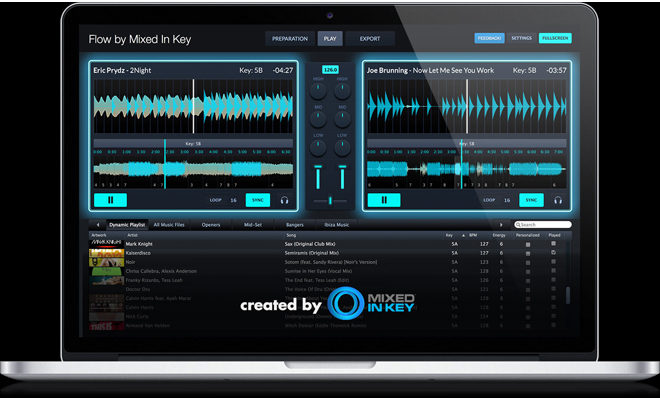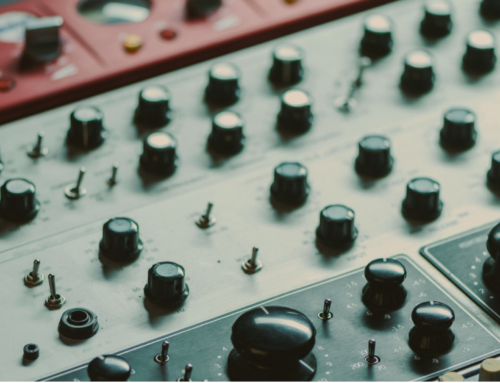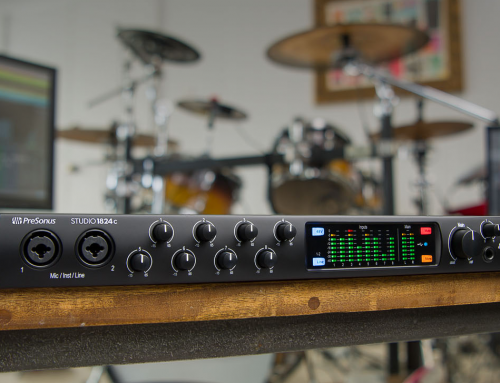If you ask DJs what they like most about any given DJ software, one of the responses you’re likely to get is the way their software manages a vast library of music. Whether this is via simple iTunes integration or more complex library managing features (such as Serato’s crates or Pioneer’s Rekordbox), most DJ softwares try to keep all your favorite hits right at your fingertips. But what about the deeper cuts? What about tracks you’d never think to play but would absolutely kill it on the dance floor? Flow by Mixed In Key steps up at long last to address this issue.
 Flow successfully combines everything I love about Mixed In Key software with an all-new interface and audio engine to create a visionary new DJ software that changes the way I think about constructing sets. The major draw of Flow is its expert detection tools. Mixed In Key is known for its quick and helpful key detection to allow for harmonic mixing, and previously I just used those metadata tags in Traktor to help put together a mix. However, Flow now analyzes not only key but overall energy, as well as the key and energy of individual song segments. That’s right – segments. Flow not automatically reads key and energy but also determines the breakpoints between different song segments like chorus, verse, breakdown, etc. What’s more, Flow allows you to launch any of these segments on the fly, much like an Ableton Live session. If Flow’s detection gets anything wrong, the user is free to tweak these detected parameters at any time, though in my experience Flow has been pretty spot-on.
Flow successfully combines everything I love about Mixed In Key software with an all-new interface and audio engine to create a visionary new DJ software that changes the way I think about constructing sets. The major draw of Flow is its expert detection tools. Mixed In Key is known for its quick and helpful key detection to allow for harmonic mixing, and previously I just used those metadata tags in Traktor to help put together a mix. However, Flow now analyzes not only key but overall energy, as well as the key and energy of individual song segments. That’s right – segments. Flow not automatically reads key and energy but also determines the breakpoints between different song segments like chorus, verse, breakdown, etc. What’s more, Flow allows you to launch any of these segments on the fly, much like an Ableton Live session. If Flow’s detection gets anything wrong, the user is free to tweak these detected parameters at any time, though in my experience Flow has been pretty spot-on.
 Flow’s simple and attractive UI makes it easy for you to access any feature you may need at a given time. The main interface is split into three modules: Prepare, Play, and Export. Only one module can be viewed at a time, but you’re free to flip between modules and operate within each of them without affecting the performance of the other modules. The Prepare module is where you’ll read in new tracks and set them up for analysis, which proceeds rather quickly. From there you can view the different segments Flow has created for you and make corrections if needed. The Play module is a fairly no-frills track player with two decks, a mixer, EQ, and a crossfader. The track decks are particularly cool because they show a zoomed-in waveform view as well as a total track view with segments and segment energy clearly defined. While playing, you can click any segment to automatically crossfade to it, allowing for extremely easy live remixes and mashups made even easier with immediate knowledge of key and energy data. What blew me away, and what is perhaps the coolest feature in the entire software, is the Dynamic Playlist, which reads the energy and key of the current song and the songs you’ve been playing and makes suggestions of other songs which might work seamlessly into your set. Seasoned DJs are free to scoff at the idea that some computer algorithm is better than you at picking out what songs work well together, but I see flow’s Dynamic Playlist as a helpful utility to offer new ideas. Rather than sticking to your immediately available crates or playlists, the Dynamic Playlist digs way deep into your library and offers any song it finds that might work, often coming up with some happy surprises from unexpected folders. The fact that it automatically adds and subtracts from itself also helps prevent information overload when you don’t feel like rooting through your entire catalog to find the perfect next song. The final tab, Export, not only lets you share your DJ sets with the world, but also builds a custom Top 100 list for you to show what songs you play most (and what songs you should bring out more often). The set recording feature is also pretty cool in that it records not just audio, but your playlist as well.
Flow’s simple and attractive UI makes it easy for you to access any feature you may need at a given time. The main interface is split into three modules: Prepare, Play, and Export. Only one module can be viewed at a time, but you’re free to flip between modules and operate within each of them without affecting the performance of the other modules. The Prepare module is where you’ll read in new tracks and set them up for analysis, which proceeds rather quickly. From there you can view the different segments Flow has created for you and make corrections if needed. The Play module is a fairly no-frills track player with two decks, a mixer, EQ, and a crossfader. The track decks are particularly cool because they show a zoomed-in waveform view as well as a total track view with segments and segment energy clearly defined. While playing, you can click any segment to automatically crossfade to it, allowing for extremely easy live remixes and mashups made even easier with immediate knowledge of key and energy data. What blew me away, and what is perhaps the coolest feature in the entire software, is the Dynamic Playlist, which reads the energy and key of the current song and the songs you’ve been playing and makes suggestions of other songs which might work seamlessly into your set. Seasoned DJs are free to scoff at the idea that some computer algorithm is better than you at picking out what songs work well together, but I see flow’s Dynamic Playlist as a helpful utility to offer new ideas. Rather than sticking to your immediately available crates or playlists, the Dynamic Playlist digs way deep into your library and offers any song it finds that might work, often coming up with some happy surprises from unexpected folders. The fact that it automatically adds and subtracts from itself also helps prevent information overload when you don’t feel like rooting through your entire catalog to find the perfect next song. The final tab, Export, not only lets you share your DJ sets with the world, but also builds a custom Top 100 list for you to show what songs you play most (and what songs you should bring out more often). The set recording feature is also pretty cool in that it records not just audio, but your playlist as well.
 Flow really is a great boon for the DJ who really wants to maximize the potential of a massive library of music. Most of us know little trios of songs that work well together, but Flow really makes you think about pushing yourself to explore transitions and sequences you may not have considered. While it’s hard for me to let go of some of the feature-packed DJ performance suites on the market in favor of the highly minimalist Flow, the benefit that the Dynamic Playlist confers is so great that it’s entirely worth it to give Flow a shot. Especially during long, unplanned, free-form sets, it’s always helpful to know that Flow will keep the suggestions coming long after you’ve exhausted your go-to tracks.
Flow really is a great boon for the DJ who really wants to maximize the potential of a massive library of music. Most of us know little trios of songs that work well together, but Flow really makes you think about pushing yourself to explore transitions and sequences you may not have considered. While it’s hard for me to let go of some of the feature-packed DJ performance suites on the market in favor of the highly minimalist Flow, the benefit that the Dynamic Playlist confers is so great that it’s entirely worth it to give Flow a shot. Especially during long, unplanned, free-form sets, it’s always helpful to know that Flow will keep the suggestions coming long after you’ve exhausted your go-to tracks.





